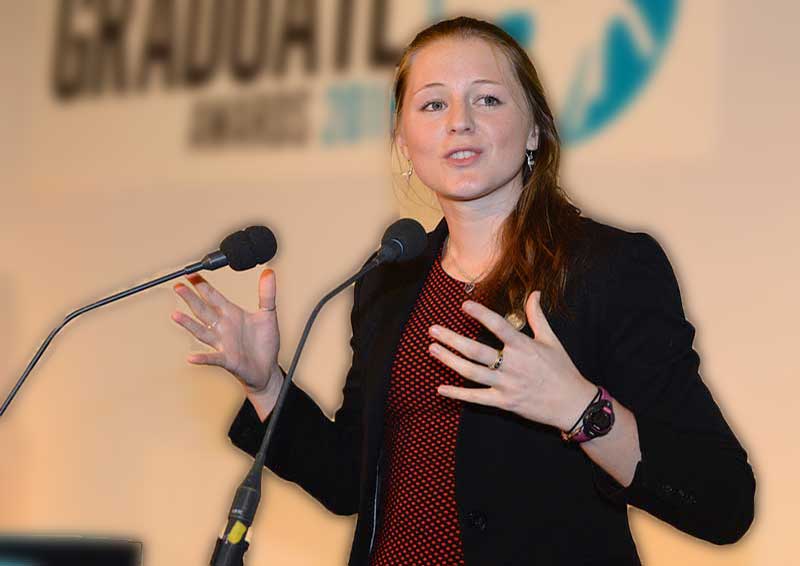What makes a great place to work?
Brittany Harris, Graduate Engineer BuroHappold and ICE President’s Apprentice, asks what makes a great place to work?
My first thought on the question of what makes a great place to work was about the building and the space.
I work for BuroHappold in Bath in a beautiful old river warehouse conversion with high ceilings and exposed beams. We are all spread out and the atmosphere in general makes it a lovely space to work in – but a space does not make a place.
As I was 'power walking' to our London office I realised that, for me, what really makes a great 'place' to work is feeling valued, feeling utilised, and that I am enabled to contribute to positive change. I guess these can be summarised as understanding my purpose within a project and the company.
They say 'millennials' will have 5 careers in their lifetime. Is this because we are easily bored? I don't think so. Among the love of technology, socialising and consuming, point 5 on a Forbes list of key millennial traits was:
"They're passionate about values –including the values of companies they do business with" which I can really identify with and was a key consideration when I was choosing who to work for.
Giving back is a big driver for action among this generation. But I am not suggesting all companies suddenly take on only philanthropic work in a bid to attract more graduates. There is a far more balanced approach, and indeed an old lesson made anew, that we can adopt. Daniel Pink published a book called 'Drive', in which he describes the drivers of change. These are 'Autonomy, Mastery and Purpose'. I think this is what most graduates look for in a job.
Autonomy:
Having some control over your career, where it is going and what you work on, being supported in moving around within the company and across projects. Companies are beginning to find that if millennials are not able to explore their careers internally then they will move on, hence the 'many jobs' route.
Mastery:
The opportunity to gain new skills and hone existing ones. Learning is great for the mind and opens doorways to new ideas and innovations.
Purpose:
Why do we come into the office or go out onsite every day? I guess that most people want to feel that they are contributing something to someone but we are not always very good as engineers at stopping and thinking "What does this project really achieve? Who does this affect?"
Crossrail is not just a big tunnel with lots of steel and concrete, it is part of a vision to get people moving around London faster, to help connect families and friends, and grow London. That is why we engineer – it helps make the world go around.
Employer checklist
If companies are looking to attract but more importantly keep graduates then they need to build a great place to work. This is not just about the building and free tea but about how we feel about our role. So ask yourselves:
- Do your employees have a degree of control or steer over what they work on and what they do?
- Are they constantly learning and mastering skills?
- Are they aware of their role in achieving the vision of a project?
- Do they know why they are doing what they do and understand why it is important?
Only by engaging engineers in the role we play in delivering change and achieving a brighter future for the world we live in can we keep those vital people and skills in our industry.
High ceilings and exposed beams may look pretty but it's the work we do that keeps us in engineering.
This article was originally published here by ICE on 14 Aug 2017. It was written by Brittany Harris, Graduate Engineer BuroHappold and ICE President’s Apprentice.
--The Institution of Civil Engineers
[edit] Related articles on Designing Buildings Wiki
Featured articles and news
One of the most impressive Victorian architects. Book review.
RTPI leader to become new CIOB Chief Executive Officer
Dr Victoria Hills MRTPI, FICE to take over after Caroline Gumble’s departure.
Social and affordable housing, a long term plan for delivery
The “Delivering a Decade of Renewal for Social and Affordable Housing” strategy sets out future path.
A change to adoptive architecture
Effects of global weather warming on architectural detailing, material choice and human interaction.
The proposed publicly owned and backed subsidiary of Homes England, to facilitate new homes.
How big is the problem and what can we do to mitigate the effects?
Overheating guidance and tools for building designers
A number of cool guides to help with the heat.
The UK's Modern Industrial Strategy: A 10 year plan
Previous consultation criticism, current key elements and general support with some persisting reservations.
Building Safety Regulator reforms
New roles, new staff and a new fast track service pave the way for a single construction regulator.
Architectural Technologist CPDs and Communications
CIAT CPD… and how you can do it!
Cooling centres and cool spaces
Managing extreme heat in cities by directing the public to places for heat stress relief and water sources.
Winter gardens: A brief history and warm variations
Extending the season with glass in different forms and terms.
Restoring Great Yarmouth's Winter Gardens
Transforming one of the least sustainable constructions imaginable.
Construction Skills Mission Board launch sector drive
Newly formed government and industry collaboration set strategy for recruiting an additional 100,000 construction workers a year.
New Architects Code comes into effect in September 2025
ARB Architects Code of Conduct and Practice available with ongoing consultation regarding guidance.
Welsh Skills Body (Medr) launches ambitious plan
The new skills body brings together funding and regulation of tertiary education and research for the devolved nation.
Paul Gandy FCIOB announced as next CIOB President
Former Tilbury Douglas CEO takes helm.
























